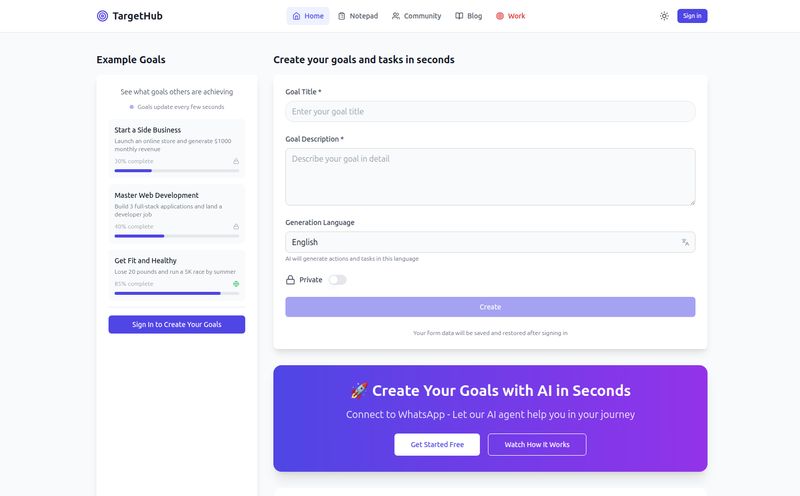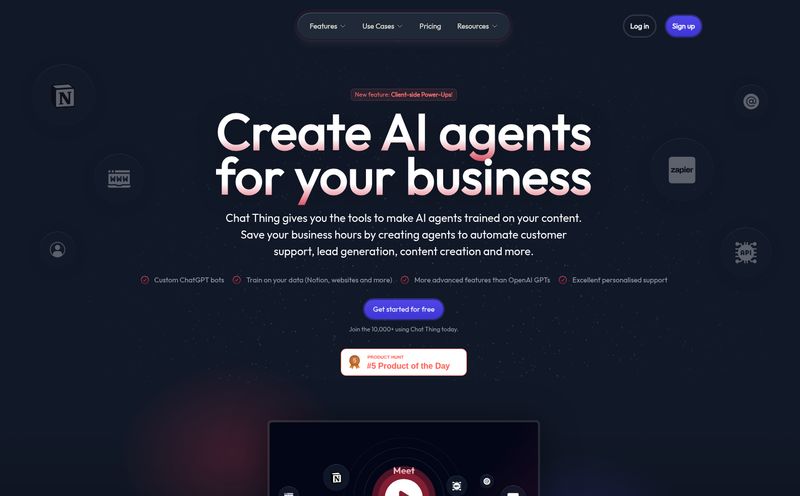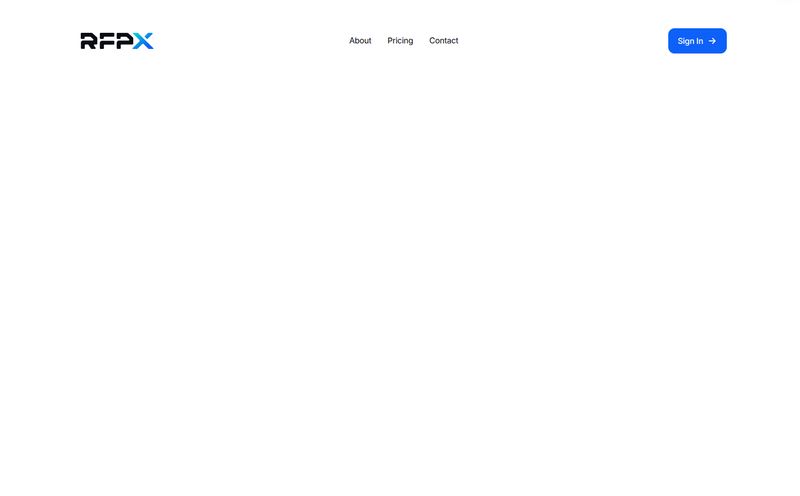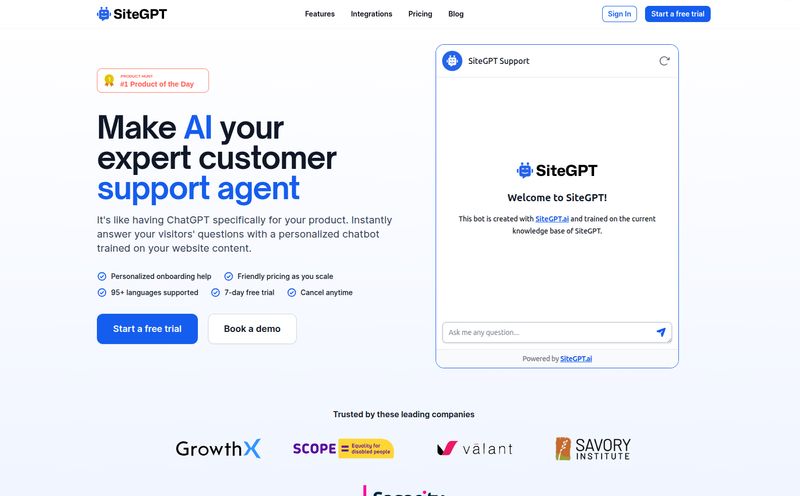If you've been in the marketing or business growth game for more than five minutes, you've felt the pain. The pain of data. It's everywhere. We're told to be “data-driven,” but most of the time, that means wrestling with monstrous spreadsheets or begging the one person in the company who understands SQL for a report you needed yesterday. Traditional Business Intelligence (BI) tools? Don't get me started. They often feel like they were designed by engineers, for engineers, requiring a steep learning curve and a hefty budget.
So when I stumble across a tool that calls itself a “Self Service BI Platform” and throws “ChatGPT Integration” into the mix, my ears perk up. It’s called NativeBI. The promise is simple: simplify your data, find the hidden gold, and make better decisions. Sounds great. But as we know in the SEO world, promises are cheap. Traffic is expensive.
So I decided to take a look under the hood. Is this just another dashboard with a fancy gimmick, or is it a genuinely useful tool for folks like us? Let's get into it.
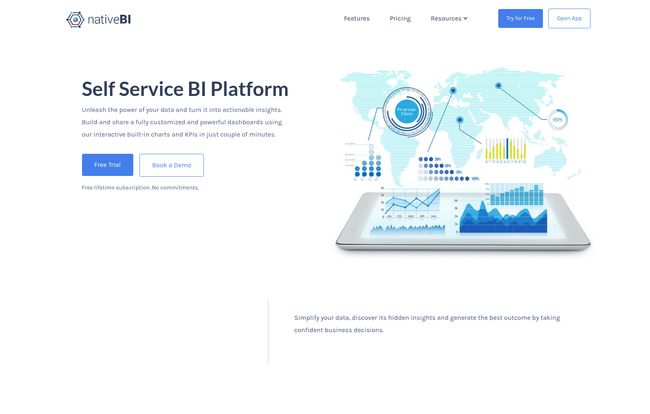
Visit NativeBI
So, What Exactly Is NativeBI?
Strip away the buzzwords, and here’s what you get: NativeBI is a platform that lets you pull in data from different places, visualize it on a dashboard, and—this is the kicker—ask it questions in plain English. Think of it less like a rigid reporting tool and more like a conversation with your company's data. You connect your data sources, and it gives you a playground to explore what's really going on.
The whole “self-service” thing is key here. The goal is to empower the people who actually need the insights—the marketing managers, the sales leads, the founders—to get their own answers without being a data wizard. It’s a trend we’ve seen growing, a move away from gatekept information towards something more democratic. And frankly, it's about time.
The Main Event: ChatGPT Meets Your Data
Let's be honest, this is the feature that makes you click. NativeBI has woven ChatGPT directly into its platform, and it’s more than just a chatbot in the corner. This integration aims to be your on-demand data analyst. Instead of trying to remember the right filter or formula to figure out, say, 'which marketing channel had the best ROI last quarter?', you can literally just ask that question.
This is a game-changer. It lowers the barrier to entry to almost zero. It’s like having a junior analyst on your team who never sleeps, never complains, and is ridiculously fast. The feature is called Ad-hoc ChatGPT Analysis, and it's built for those spur-of-the-moment questions that pop into your head during a meeting. You know the ones. The questions that would normally get added to a to-do list and maybe answered next week.
Of course, it's not pure magic. The quality of your answers depends on the quality of your questions (and your data, obviously). There’s a bit of a learning curve in figuring out how to phrase your prompts for the best results, a skill that anyone who’s used ChatGPT for more than five minutes is already developing. But the potential here is massive. It turns data exploration from a chore into a creative process.
The Core Features That Actually Matter
A fancy AI is great, but a BI tool is only as good as its foundation. Here’s a breakdown of what else NativeBI brings to the table.
Taming the Data Hydra
One of the biggest headaches for any business is that data lives in a dozen different places. Your sales are in one system, your website traffic in another, your ad spend in a third. NativeBI tackles this head-on with its Data Consolidation. You can pull in data from a simple Excel file, or connect to more serious sources like Oracle, MSSQL, MySQL, and even REST APIs. Bringing all that information into one place to see the full picture? That’s not just a feature; it’s therapy for the data-overwhelmed.
More Than Just Pretty Charts
We’ve all seen dashboards that are all style and no substance. NativeBI focuses on Interactive Dashboards. This means you can click on a chart, and the rest of the dashboard filters down to that specific segment. It makes drilling down into your data intuitive. You can see your overall sales, click on a specific region, and instantly see the top products for just that area. Plus, it’s all responsive, so you can pull up your key metrics on your phone while you're waiting for your coffee. It’s a small thing, but it’s how we work now, isnt it?
Bringing the Team to the Data Party
Data insights are useless if they stay in a silo. NativeBI is built for Team Collaboration. It has different user roles—Admins who control everything, Analysts who can build and edit dashboards, and Viewers who can… well, view them. This is particularly useful. You can give your entire sales team view-only access to a live performance dashboard without worrying about someone accidentally breaking it. The higher-tier plans offer a generous number of users, which is great for growing teams.
Let's Talk Money: The NativeBI Pricing Plans
Ah, the pricing page. The moment of truth. I was pleasantly surprised here. The structure is straightforward and seems fairly priced for the market. Here's my take on the tiers:
| Plan | Price | My Take |
|---|---|---|
| Personal Usage (Free) | $0 / Month | This is a demo, not a long-term solution. With 1 datasource (Excel only) and only 10 ChatGPT requests a day, it's just enough to see if you like the feel of the platform. Think of it as a test drive. |
| Pro (Startup or Small Team) | $25 / Month | This is the sweet spot. For the price of a few fancy coffees, you get multiple database connections, a decent number of dashboards and users, and enough ChatGPT requests for daily use. This is the one for most small businesses and marketing teams. |
| Enterprise | $100 / Month | For larger operations. You get a lot more of everything: datasources, dashboards, users, and a hefty 100 ChatGPT requests per day. If you have multiple departments that need access, this is the way to go. |
The Good, The Bad, and The Interesting
No tool is perfect. After poking around, here’s my honest assessment.
What I really like is the genuinely low barrier to entry. The combination of an intuitive interface and the ChatGPT feature makes data analysis feel approachable, even fun. The Pro plan at $25 is incredibly competitive. For a small business owner who needs answers fast, this could be a huge win.
Where it could improve? The free plan is quite restrictive. I get it, they want you to upgrade, but allowing at least one SQL connection on the free tier would give developers a much better chance to properly test it. Also, while the ChatGPT feature is powerful, its effectiveness is tied to your ability to write good prompts. It’s a skill, not a magic button, and some users might get frustrated if they expect it to read their minds.
So, Who Is NativeBI Actually For?
I see a very clear audience for NativeBI. It’s for the startup founder who is also the head of marketing and sales. It’s for the digital agency that needs to create quick, insightful reports for multiple clients without a massive overhead. It's for the ecommerce store owner who wants to know which products are trending right now.
It’s for anyone who feels that traditional BI tools like Tableau or Power BI are overkill—too complex, too slow, and too expensive for their needs. NativeBI isn't trying to be those tools. It's trying to be faster, more agile, and more conversational. And in my opinion, it succeeds.
Frequently Asked Questions about NativeBI
What is NativeBI in a nutshell?
NativeBI is a self-service business intelligence platform that helps you connect your data, create interactive dashboards, and analyze it by asking questions in plain English, thanks to its ChatGPT integration.
How does the ChatGPT analysis actually work?
You can type a question like "Compare sales from Q1 and Q2 by product category" directly into the platform. It uses the AI model to understand your question, query your connected data, and generate an answer, often with a corresponding chart or table.
What kind of data sources can I connect?
The paid plans support a range of sources, including Excel, Oracle, MSSQL, MySQL, and REST APIs. The free plan is limited to Excel only.
Is NativeBI hard to learn?
The basic dashboarding is very intuitive if you've ever used a similar tool. The ChatGPT feature is easy to start with, but getting the most out of it will take a little practice in how you phrase your questions. It's generally much easier to pick up than traditional, heavy-duty BI software.
Is the free plan good enough for my small business?
Truthfully, probably not for long-term use. It's designed as a trial to let you experience the platform's functionality. The limitations on data sources and query volume mean you'll likely need to upgrade to the Pro plan for any serious, ongoing analysis.
How does it stack up against Google Looker Studio or Tableau?
It's a different beast. Tools like Tableau are incredibly powerful and customizable but come with a much steeper learning curve and cost. Looker Studio (formerly Data Studio) is great for visualizing Google-specific data but can be clunky with other sources. NativeBI's strength is its speed and conversational analysis, positioning it as a more agile and user-friendly alternative for small to medium-sized teams.
My Final Verdict: A Refreshing Take on BI
Look, the world of BI is crowded and, frankly, a bit stale. NativeBI feels like a breath of fresh air. It’s not trying to do everything for everyone. Instead, it focuses on solving a very real problem: making data analysis accessible to the people who need it most. The ChatGPT integration isn't just a gimmick; it’s a smart way to lower the technical barrier and speed up the time to insight.
If you're a data scientist at a Fortune 500 company, this might not replace your complex legacy systems. But if you’re a scrappy entrepreneur, a marketer, or a team lead trying to make smarter decisions without getting a degree in data science, NativeBI is absolutely worth a look. It’s a sharp, modern tool for the job at hand. And at $25 for the Pro plan, it's a pretty low-risk bet.
